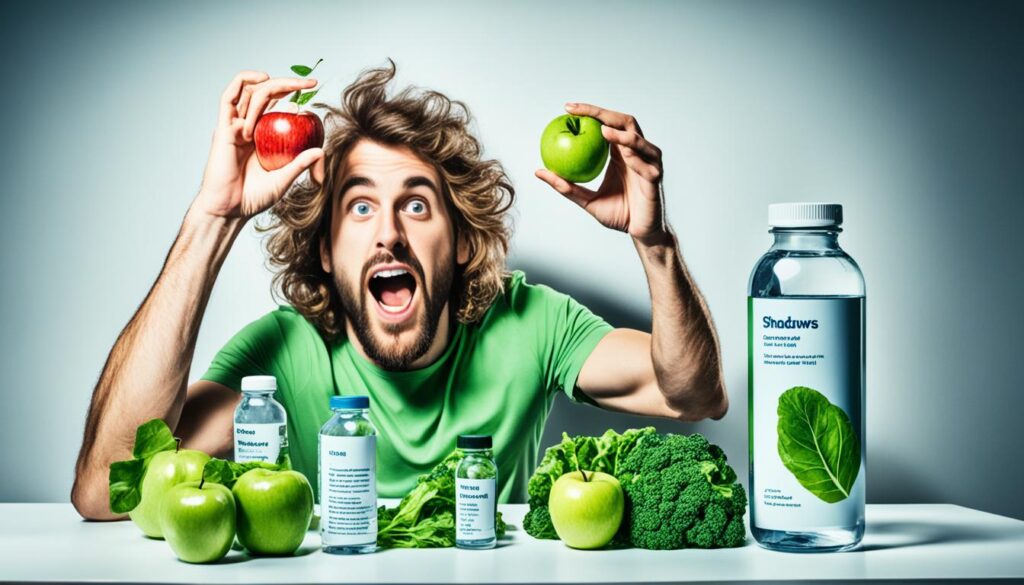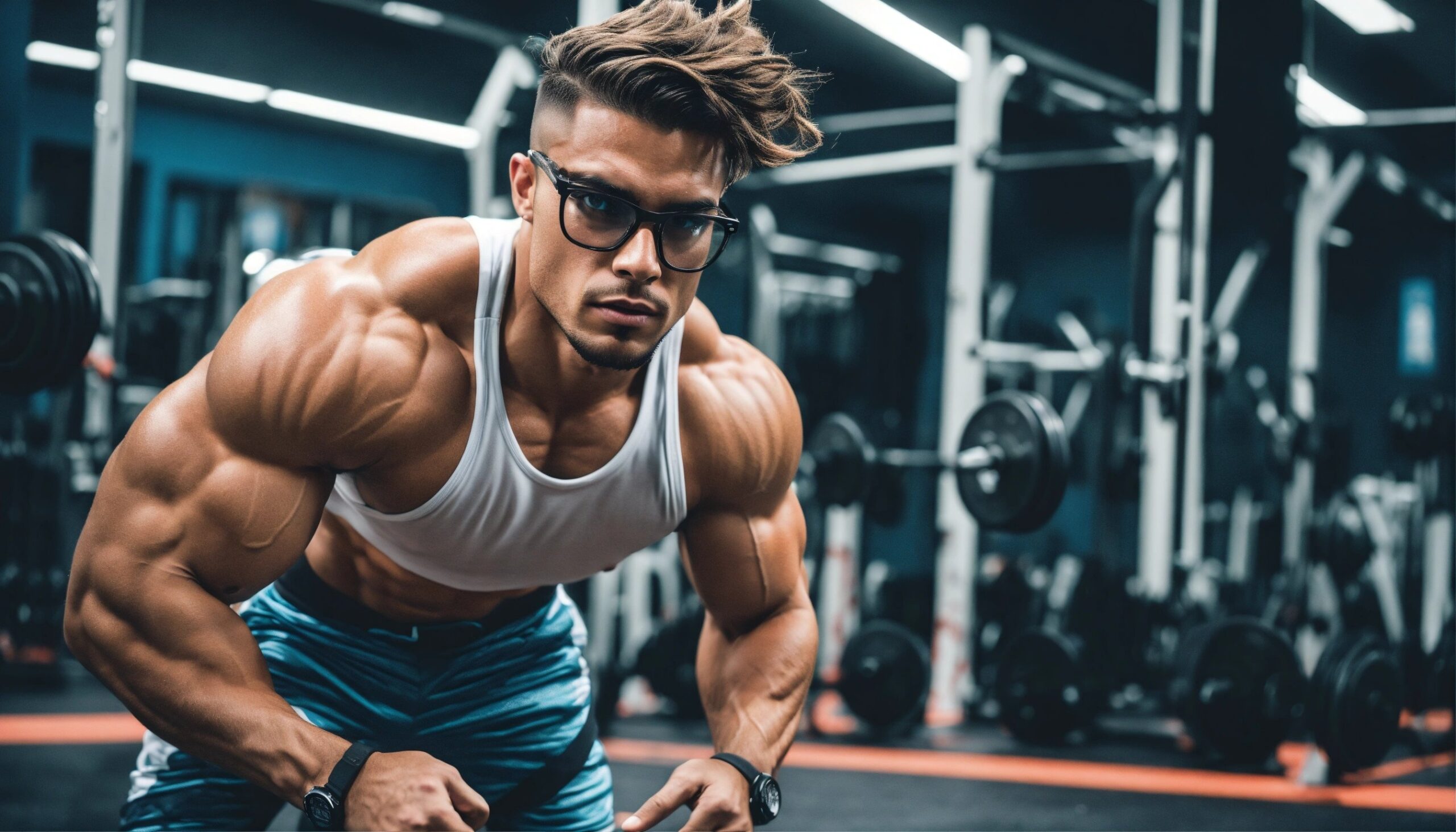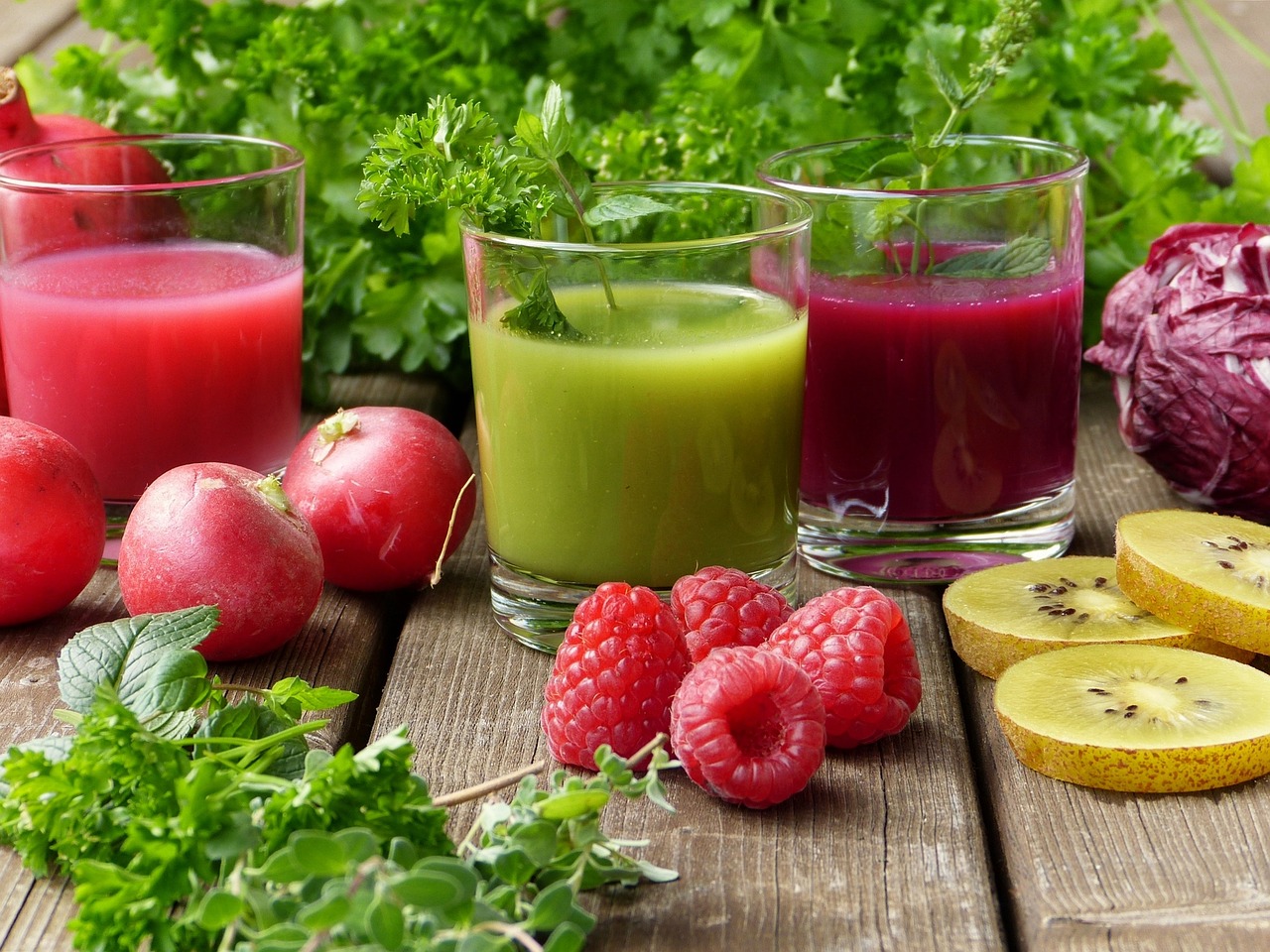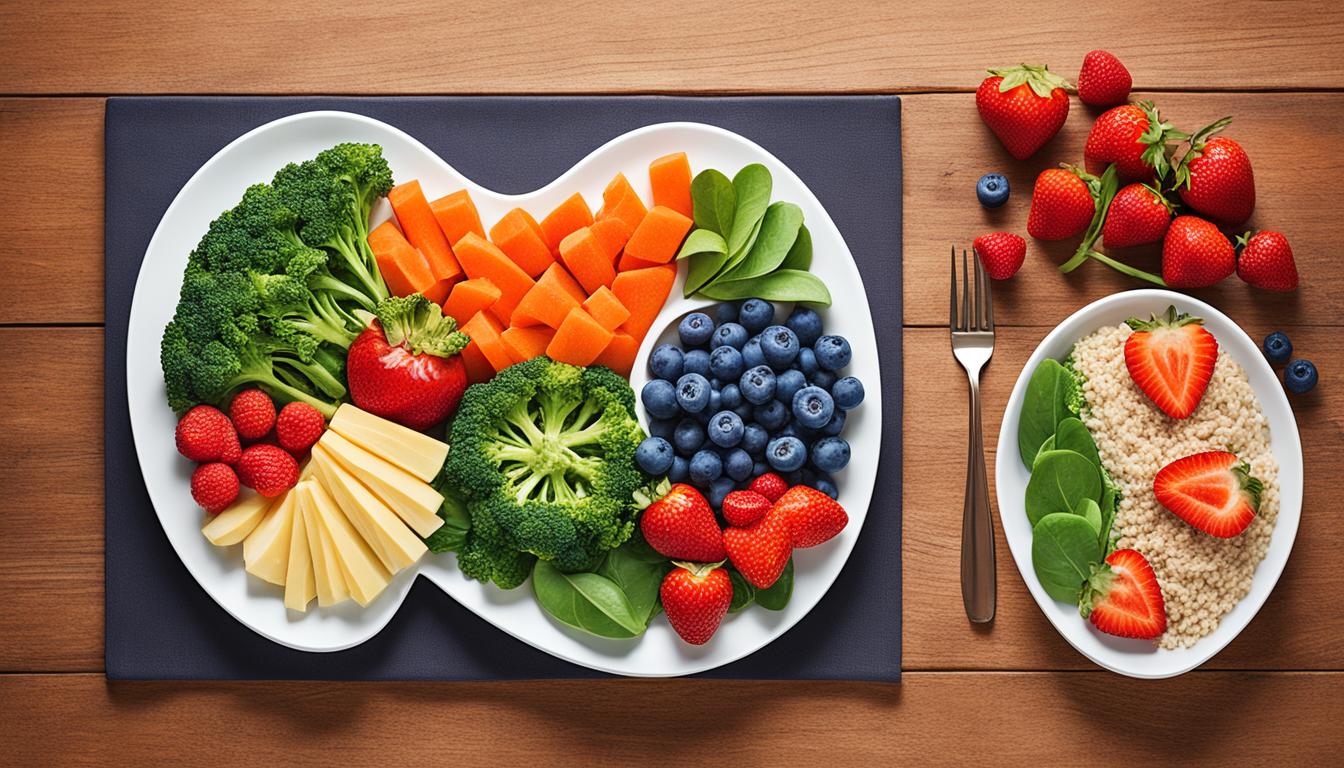Understanding Iron Deficiency
Do you often feel extremely fatigued, weak, or notice brittle nails? These could be warning signs of iron deficiency, a condition that affects millions of people worldwide. But what exactly causes iron deficiency, and how can it be treated? Whether you’re looking to understand the symptoms, explore iron-rich foods, or learn about effective solutions, this article has got you covered.
Iron deficiency anemia is a common type of anemia characterized by a lack of healthy red blood cells due to insufficient iron. It can lead to symptoms such as extreme fatigue, weakness, pale skin, chest pain, and brittle nails. Causes of iron deficiency anemia include blood loss, a lack of iron in the diet, and an inability to absorb iron properly. Iron-rich foods and supplements can help treat and prevent iron deficiency. It’s important to seek medical advice for proper diagnosis and treatment.
Key Takeaways:
- Iron deficiency is a common condition that can cause symptoms like extreme fatigue and brittle nails.
- The main causes of iron deficiency include blood loss, a lack of iron in the diet, and problems with iron absorption.
- Iron-rich foods and supplements can help treat and prevent iron deficiency.
- It’s important to seek medical advice for a proper diagnosis and personalized treatment plan.
- Understanding iron deficiency and its solutions is crucial for maintaining optimal health.
Signs and Symptoms of Iron Deficiency Anemia
Iron deficiency anemia can manifest with various signs and symptoms, indicating a lack of healthy red blood cells due to insufficient iron levels in the body. Recognizing these symptoms is crucial for early diagnosis and appropriate treatment.
Common symptoms of iron deficiency anemia include:
- Extreme fatigue: Individuals may experience a profound and persistent feeling of tiredness, even with adequate rest.
- Pale skin: A characteristic pallor or paleness may be observed, especially noticeable on the face, lips, and nail beds.
- Chest pain: Some individuals may experience chest pain or a feeling of pressure in the chest.
- Brittle nails: Nails may become brittle, weak, and prone to cracking or breaking easily.
Additional symptoms can include a rapid heartbeat (tachycardia), shortness of breath, headaches, dizziness, cold hands and feet, tongue inflammation or soreness (glossitis), unusual cravings for non-nutritive substances (pica), and poor appetite in infants and children.
If you are experiencing any of these symptoms, it is crucial to consult a healthcare professional for a proper diagnosis and appropriate treatment. Early detection and management of iron-deficiency anemia can significantly improve your quality of life.
Causes of Iron Deficiency Anemia :
Iron deficiency anemia can occur due to several factors, each contributing to a lack of sufficient iron in the body. Understanding these causes is crucial to preventing and managing this condition effectively.
Blood Loss:
One of the primary causes of iron deficiency anemia is blood loss. This can result from conditions such as heavy menstrual periods or gastrointestinal bleeding. In individuals experiencing frequent or excessive blood loss, the body may not have enough iron to produce an adequate number of red blood cells, leading to anemia.
Lack of Iron in the Diet:
Insufficient intake of iron-rich foods can contribute to iron deficiency anemia. This is particularly relevant for individuals following vegetarian or vegan diets, as meat and seafood are excellent sources of dietary iron. Failing to incorporate alternative iron sources, such as legumes, dark green leafy vegetables, and iron-fortified cereals, can increase the risk of anemia.
Inability to Absorb Iron:
Certain medical conditions can impact the body’s ability to absorb iron from food. Conditions like celiac disease, which damages the lining of the small intestine, or gastrointestinal disorders can interfere with iron absorption, even if an individual consumes an iron-rich diet.
Pregnancy: Pregnancy can also lead to iron deficiency anemia, as the body requires increased iron to support the growing fetus and accommodate the higher blood volume necessary during this phase. If the pregnant individual does not consume enough iron through their diet or have sufficient iron stores, anemia can occur.
To effectively address iron deficiency anemia, it is essential to identify and address the underlying causes. Medical evaluation and guidance can help determine the specific cause and offer appropriate treatment options, which may include dietary modifications and iron supplementation.
| Causes of Iron Deficiency Anemia | Description |
|---|---|
| Blood Loss | Excessive blood loss, such as from heavy menstrual periods or gastrointestinal bleeding, can deplete iron stores and lead to anemia. |
| Lack of Iron in Diet | Inadequate consumption of iron-rich foods, particularly in vegetarian or vegan diets, can result in insufficient iron levels and contribute to anemia. |
| Inability to Absorb Iron | Medical conditions like celiac disease or gastrointestinal disorders can impair the absorption of iron from food, leading to low iron levels and anemia. |
| Pregnancy | During pregnancy, the body requires more iron to support the developing fetus, and insufficient intake or iron stores can cause anemia. |
Risk Factors for Iron Deficiency Anemia
Certain groups of people are more susceptible to developing iron deficiency anemia. Understanding the risk factors can help individuals take preventive measures and maintain optimal iron levels.
Women: Women are at a higher risk of iron deficiency anemia due to menstrual blood loss. The monthly menstrual cycle can lead to a significant depletion of iron stores in the body.
Infants and Children: Infants and children, especially those who are premature or have low birth weight, may be vulnerable to iron deficiency anemia. Their growing bodies require an adequate supply of iron for healthy development.
Vegetarians: Vegetarians who do not consume iron-rich foods or take necessary supplements may lack iron in their diets. Plant-based sources of iron may not be as easily absorbed by the body compared to animal-based sources.
Frequent Blood Donors: Individuals who donate blood frequently are at risk of iron deficiency anemia. Blood donation depletes iron stores in the body, which, if not replenished, can lead to insufficient iron levels.
To mitigate the risk of iron deficiency anemia, it’s important for women to monitor their iron levels regularly, especially during menstruation. Infants and children should receive adequate nutrition, including iron-rich foods or iron-fortified formula. Vegetarians can consider incorporating iron-rich plant-based sources into their diet or taking iron supplements under medical guidance. Frequent blood donors should consult with healthcare professionals to ensure their iron levels are maintained.
Incorporating the right lifestyle choices and seeking medical advice can help prevent iron deficiency anemia and promote overall well-being.
Complications of Iron Deficiency Anemia
If left untreated, iron-deficiency anemia can lead to various complications. It may cause heart problems, including a rapid or irregular heartbeat and an enlarged heart. Pregnant women with severe iron deficiency anemia may be at risk of problems during pregnancy, such as premature births and low birth weight babies. In infants and children, iron deficiency anemia can lead to growth problems and delayed development, as well as increased susceptibility to infections.
If left untreated, iron deficiency anemia can lead to various complications.
Prevention of Iron Deficiency Anemia
Iron-deficiency anemia can be effectively prevented by incorporating certain measures into your daily routine. By following these preventive strategies, you can ensure that your body maintains optimal iron levels, reducing the risk of developing iron deficiency anemia.
1. Include Iron-Rich Foods in Your Diet
Consuming foods rich in iron is essential for preventing iron deficiency anemia. The following are some excellent sources of iron:
- Red meat
- Poultry
- Seafood
- Beans
- Dark green leafy vegetables
- Dried fruits
- Iron-fortified cereals
- Peas
These iron-rich foods provide the necessary nutrients to support the production of healthy red blood cells. Including a variety of these foods in your meals can help ensure adequate iron intake.
2. Enhance Iron Absorption with Vitamin C
Vitamin C plays a crucial role in the absorption of dietary iron. Including vitamin C-rich foods in your diet can optimize iron absorption and prevent the occurrence of iron deficiency anemia. Foods such as citrus fruits (oranges, grapefruits) and leafy greens (broccoli, spinach) are excellent sources of vitamin C.
3. Promote Iron Levels through Breastfeeding
For new mothers, breastfeeding is an effective way to prevent iron deficiency anemia in babies. Breast milk contains essential nutrients, including iron, that help maintain adequate iron levels in infants. It is important to ensure that infants are exclusively breastfed for the first six months and continue receiving iron-fortified formula as recommended by healthcare professionals.
4. Consider Iron Supplements as Needed
In some cases, iron supplements may be necessary to maintain optimal iron levels. If you are at risk of iron deficiency anemia or have been diagnosed with it, your healthcare provider may recommend iron supplements to support your iron stores. It is important to follow the recommended dosage and consult with your healthcare provider before starting any supplementation.
By incorporating iron-rich foods, consuming vitamin C-rich foods, promoting breastfeeding, and considering iron supplements when necessary, you can effectively prevent iron deficiency anemia and maintain optimal health.

Diagnosis of Iron Deficiency Anemia
To accurately diagnose iron deficiency anemia, healthcare providers utilize various diagnostic tests and evaluations. These tests help determine whether an individual has iron-deficiency anemia or another type of anemia.
Complete Blood Count (CBC) Test
A complete blood count (CBC) test is often the first step in diagnosing iron-deficiency anemia. It provides valuable information about the levels of red blood cells (RBCs), hemoglobin, and hematocrit in the bloodstream.
During a CBC test, a small blood sample is taken from the patient. It is then analyzed in a laboratory to determine the RBC count, hemoglobin level, and hematocrit percentage. These measurements help identify any abnormalities and may indicate the presence of anemia.
Iron Studies
In addition to the CBC test, healthcare providers may perform iron studies to assess the iron status and determine the underlying cause of anemia.
Iron studies typically include the following tests:
- Serum Iron: Measures the amount of iron in the blood.
- Total Iron Binding Capacity (TIBC): evaluates the body’s ability to bind and transport iron.
- Ferritin Level: assesses the amount of iron stored in the body.
These tests help determine if iron deficiency is the root cause of anemia and provide valuable information about the body’s iron stores.
If the results of these tests indicate iron deficiency anemia, healthcare providers can recommend an appropriate treatment plan to address the condition.
| Diagnostic Test | Function |
|---|---|
| Complete Blood Count (CBC) Test | Evaluates the levels of red blood cells (RBCs), hemoglobin, and hematocrit in the bloodstream |
| Serum Iron | Measures the amount of iron in the blood |
| Total Iron Binding Capacity (TIBC) | Evaluates the body’s ability to bind and transport iron |
| Ferritin Level | Assesses the amount of iron stored in the body |
Treatment of Iron Deficiency Anemia
The treatment of iron deficiency anemia involves a combination of iron supplementation, diet modifications, and regular monitoring by healthcare professionals. The goal is to replenish iron stores in the body and address the underlying cause of the condition.
Iron Supplements
Iron supplements play a key role in treating iron-deficiency anemia. Healthcare providers may prescribe iron supplements, such as ferrous sulfate, to help increase iron levels. It is important to follow the recommended dosage and take the supplements as directed. Consistency is crucial to ensuring the body maintains adequate iron stores.
“Iron supplements are an effective way to replenish iron levels, but it’s important to take them as prescribed and follow up with your healthcare provider.”
Diet Modifications
In addition to supplements, making certain dietary modifications can support the long-term management of iron deficiency anemia. Including iron-rich foods in the diet is essential. Here are some examples of iron-rich foods:
| Food Source | Iron Content |
|---|---|
| Red meat | High |
| Poultry | Moderate |
| Seafood | Moderate |
| Beans | Moderate |
| Dark green leafy vegetables | Moderate |
These iron-rich foods can help provide the necessary nutrients to support the production of healthy red blood cells. It is advised to consult with a healthcare provider or a registered dietitian who can help create a balanced meal plan that incorporates these foods into the diet.
Regular Monitoring
Regular follow-up with a healthcare provider is crucial for effective management of iron deficiency anemia. They can monitor iron levels through blood tests and make adjustments to the treatment plan as needed. It is important to communicate any changes in symptoms or concerns during these follow-up visits.
By combining iron supplementation, diet modifications, and ongoing medical guidance, individuals with iron deficiency anemia can effectively manage their condition and improve their overall health.

Iron Deficiency Anemia in Specific Populations
Iron-deficiency anemia can affect specific populations differently. It is important to understand how iron deficiency anemia manifests in different groups of people to ensure appropriate diagnosis and treatment.
Iron Deficiency Anemia in Women
Women are particularly susceptible to iron deficiency anemia due to menstrual blood loss. The loss of blood during menstruation can deplete iron stores, leading to anemia. It is essential for women to monitor their iron levels and ensure adequate iron intake through diet or supplements to prevent anemia.
Iron Deficiency Anemia in Children
Children, especially infants, are also at risk of developing iron deficiency anemia. Infants who do not receive proper nutrition or are not given iron-fortified formula may experience a lack of iron, leading to anemia. It is crucial for parents and caregivers to provide a balanced diet and ensure appropriate iron intake to prevent anemia in children.
Iron Deficiency Anemia in Pregnancy
Pregnant women have an increased risk of developing iron-deficiency anemia. During pregnancy, the body requires more iron to support the increased blood volume and the developing fetus. If a pregnant woman does not have enough iron stores, it can lead to anemia. Adequate prenatal care, including regular iron supplementation and monitoring, is essential to prevent and treat iron deficiency anemia in pregnant women.
Iron-Rich Foods for iron-deficiency Deficiency Anemia
Ensuring a balanced diet that includes iron-rich foods is essential for individuals with iron deficiency anemia. By incorporating these foods into your daily meals, you can increase your iron levels and support the production of healthy red blood cells. Some excellent sources of iron-rich foods include:
- Red meat: beef, lamb, and pork are high in heme iron, a form of iron that is easily absorbed by the body.
- Poultry: Chicken and turkey provide a good source of iron, especially when consumed without the skin.
- Seafood: Shellfish, such as clams, mussels, and oysters, as well as fish like sardines and salmon, are rich in iron.
- Beans: Legumes like kidney beans, chickpeas, and lentils are not only a great source of iron but also offer high fiber content.
- Dark green leafy vegetables like spinach, kale, and Swiss chard are packed with iron and other essential vitamins and minerals.
- Iron-fortified cereals: Certain cereals are fortified with iron, providing a convenient option for increasing iron intake.
It’s important to note that the body absorbs non-heme iron, found in plant-based foods like beans and dark green leafy vegetables, more efficiently when paired with vitamin C-rich foods. Incorporating citrus fruits like oranges and grapefruits, as well as leafy greens like broccoli and spinach, into your meals can enhance iron absorption and maximize the benefits of iron-rich foods.
By including these iron-rich foods in your diet, you can take proactive steps towards managing iron deficiency anemia and promoting overall wellness.
Importance of Vitamin C for Iron Absorption
Vitamin C plays a crucial role in the absorption of iron in the body. By consuming foods rich in vitamin C, such as citrus fruits like oranges and grapefruits, as well as leafy greens like broccoli and spinach, you can significantly enhance your body’s ability to absorb dietary iron.
Pairing iron-rich foods with vitamin C-rich sources is the key to optimizing iron absorption. Including citrus fruits and leafy greens in your meals can help combat iron deficiency anemia and ensure that your body efficiently uses the iron present in your diet.
By incorporating these vitamin C-rich foods into your diet, you can make sure that the iron you consume is effectively absorbed and utilized by your body, promoting overall health and well-being.
therefore….
Iron-deficiency anemia is a common condition that can significantly impact overall health. Recognizing the signs and symptoms, understanding the causes and risk factors, and taking preventative measures are crucial to maintaining optimal well-being. Incorporating iron-rich foods into your diet, such as red meat, poultry, seafood, beans, and dark green leafy vegetables, can help address iron deficiency and support the production of healthy red blood cells.
Furthermore, considering the importance of vitamin C for iron absorption is key. Including citrus fruits like oranges and grapefruits, as well as leafy greens such as broccoli and spinach, can enhance the body’s ability to absorb dietary iron. This combination can optimize iron levels and combat iron-deficiency anemia.
It is essential to seek medical advice for proper diagnosis and treatment as well. A healthcare provider can conduct tests to determine iron levels and prescribe iron supplements, if necessary. Regular follow-up appointments can ensure proper monitoring of iron levels and adjustments to treatment plans when needed.
By addressing iron deficiency anemia through proper prevention and treatment and incorporating iron-rich foods and vitamin C into the diet, individuals can promote their overall well-being and maintain optimal health.
FAQ
What are the symptoms of an iron deficiency?
What causes iron-deficiency anemia?
Who is at risk of developing iron-deficiency anemia?
What complications can arise from iron deficiency anemia?
How can iron-deficiency anemia be prevented?
How is iron-deficiency anemia diagnosed?
What is the treatment for iron-deficiency anemia?
How does iron deficiency anemia affect specific populations?
What are some iron-rich foods for iron-deficiency anemia?
Why is vitamin C important for iron absorption?
What should I know about iron deficiency and its prevention and treatment?









